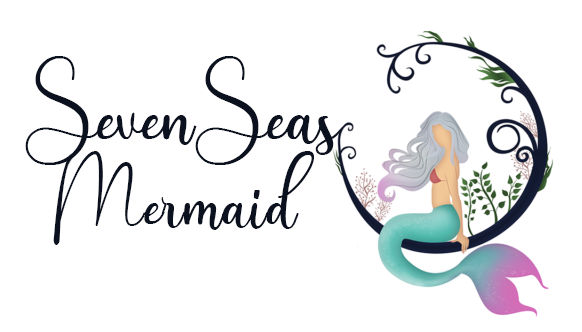We all grew up with commercialized versions of fairy tales. But before Disney made folk stories into films enjoyed by millions, it was writers like Jacob and Wilhelm Grimm who collected and brought those tales to the masses.
But The Little Mermaid, contrary to many people’s assumptions, wasn’t written by the Grimm brothers. In fact, it wasn’t even a folk story told and retold for generations, but a literary story written by Hans Christian Andersen in 1836.
So what was the story behind The Little Mermaid? And did the Grimm brothers ever write a mermaid fairy tale of their own? Read on to find out!
The Little Mermaid wasn’t written by the Grimm brothers
The Little Mermaid is not a Grimm fairy tale. Instead, the story was written by the Danish author Hans Christian Andersen in 1836 (Danish: Den lille havfrue). It was published in his 1837 fairy tale book called “Fairy Tales Told for Children. First Collection.”
The story was part of a literary trend in that era that emphasized good morals through children’s literature. It was meant as a vehicle for proper Victorian conduct disguised as an entertaining story with fantastical elements.
In the case of Hans Christian Andersen’s writing, the story also carried some religious undertones that signified his beliefs in the afterlife and human immortality.
What Was the Original Plot of The Little Mermaid?
Many of us have watched the Disney movie that immortalized The Little Mermaid on the silver screen. However, not many people know that the story Hans Christian Andersen told wasn’t as happy as the animated movie.
The story follows a young mermaid, the daughter of a mighty sea king and the youngest sister to five other mermaids. On a mermaid’s 15th birthday, she’s allowed to go to the surface of the water to see the world above for the first time.
The mermaid’s turn comes and she witnesses a beautiful celebration aboard a ship that gets shipwrecked shortly after. She rescues a handsome prince who doesn’t see her, but she’s taken by him and wants to join him on land.
The mermaid seeks the help of a sea witch, who gives her a potion that can transform her tail into human legs. The ordeal is excruciating and she trades her voice for her legs but swims to the surface to be found by the prince.
The caveat of the agreement with the sea witch is this: if the prince doesn’t marry her, giving her a part of his immortal soul, the mermaid will die of a broken heart. She then will transform into sea foam, perishing for eternity.
The prince finds the mermaid and is taken by her beauty although she’s mute. However, he ends up marrying a princess from a neighboring kingdom because he believes she was the one who saved his life from the shipwreck.
The little mermaid is heartbroken and awaits her fate. Her sisters try to save her by giving her a dagger with which she should kill the prince and drip his blood on her feet, turning her back into a mermaid. She refuses the offer and plunges into the sea with the dagger.
Instead of perishing, the little mermaid is resurrected as a “daughter of the air,” a spirit that brings light and helps humanity. She’s rewarded for her love and sacrifice by the promise of an immortal soul that goes to Heaven should she complete 300 years of service for mankind.
Did the Grimm Brothers Write a Mermaid Fairy Tale?
The closest thing the Grimm brothers wrote in the realm of mermaid fairy tales was a German folktale that they published in their book Kinder- und Hausmärchen in 1812. It was named The Golden Bird and had no actual mermaids in it, but a later version of it would.
In the late 19th century, Andrew Lang edited the story, called it The Golden Mermaid, and published it in The Green Fairy Book (1892). It features a very similar storyline to the Grimm brothers’ tale but replaces a princess from a golden castle with a golden mermaid.
It’s widely believed the version that contains the mermaid originates in Romania, where it was first collected by Arthur and Albert Schott and published in Walachische Maehrchen in 1845.
What Is the Plot of The Golden Mermaid?
The story follows a king who has a tree that bears golden apples, but the apples are always stolen before he could enjoy them. He sends his eldest two sons on a quest to find the thief, leaving his youngest son behind because he’s not smart enough for the mission.
The youngest son begs his father to send him too, so he allows him, but only gives him a weak horse. The young prince sacrifices his horse to a hungry wolf on his way, who turns out to be a wizard.
The prince learns the thief is a golden bird from a neighboring kingdom. He must go on a quest to trade the bird for a golden horse from two kingdoms away, and the golden horse for a golden mermaid.
With the help of the wolf, he manages to get all three items. This sparks jealousy in his older brothers, who kill him and steal his loot. The golden mermaid stays by his side until the wolf finds a way to resurrect him.
The king finds out about his youngest son’s ordeal, banishes his eldest two sons, and gives his kingdom to the young prince and his beautiful mermaid bride.
Conclusion
Unlike many other fairy tale classics collected and published by the Grimm brothers, The Little Mermaid was written much more recently by another author: Hans Christian Andersen wrote The Little Mermaid and published it in 1837.
As for the Grimm brothers, they did write another story that would go on and be associated with mermaids. Although the story of The Golden Mermaid didn’t have that sea element when the Grimm brothers wrote it, Andrew Lang added it later when he published it in 1892.


